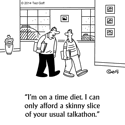US consumers need third broadband option
What do BPL, municipal WiFi and WiMax have in common? Besides being three more acronyms inscrutable to most of the population, they also represent US consumers' best hope to get more bang for their broadband dollar.
The US is woefully behind much of the rest of the world in broadband price-performance. (According to the OECD, New Zealand, for one, is worse.) The following table demonstrates the vast disparity in megabits/second delivered per dollar in different countries.
| Country | Price Per Mbit (USD) | Source |
| Japan | $0.37 | OECD, September 2005 |
| Korea | $0.42 | OECD, September 2005 |
| Sweden | $0.87 | OECD, September 2005 |
| France US – cable US – fiber | $1.75 $7.15 $3.33 | OECD, September 2005 Comcast web site, Jan 2007 Verizon web site, Jan 2007 |
|
|
|
|
Clearly, we in the US have a long way to go. And, let's face it, two broadband providers are not a competitive market--but an oligopoly. Now, with three vibrant competitors, maybe we have something. Four would be even better.
So, electric utilities, municipalities, advanced wireless spectrum license holders--let's get busy! Tens of millions are waiting.
innovation, broadband, internet, pricing


















